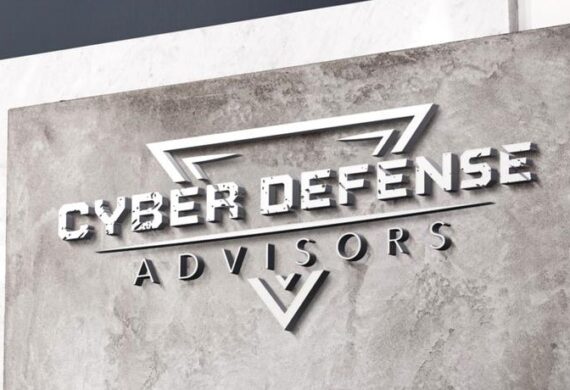
The Critical Role of Onsite IT & Security Teams in Data Center Uptime
Introduction
In the modern digital landscape, data center uptime is mission-critical for businesses across industries. Whether supporting cloud computing, e-commerce, finance, or healthcare, data centers must maintain 99.999% availability (five-nines uptime) to prevent costly disruptions.
While automation, AI-driven monitoring, and remote management tools play a significant role in ensuring data center resilience, onsite IT and security teams remain indispensable. These professionals provide real-time incident response, preventive maintenance, and physical security, ensuring uninterrupted operations.
This article explores why onsite IT & security teams are essential for data center uptime, their key responsibilities, and best practices for maintaining an always-on infrastructure.
Why Onsite IT & Security Teams Are Vital for Uptime
Despite the rise of remote monitoring and AI-driven automation, certain data center challenges require physical presence.
- Immediate Incident Response & Rapid Issue Resolution
🚨 Unplanned disruptions require instant intervention. While remote monitoring can detect issues, onsite IT teams provide hands-on troubleshooting and repairs.
✅ Hardware Failures – Replace failed components (e.g., hard drives, power supplies, network switches).
✅ Power Failures – Assess UPS (Uninterruptible Power Supply) & generator functionality.
✅ Cooling System Malfunctions – Prevent overheating before it leads to server shutdowns.
✅ Cybersecurity Incidents – Physically disconnect compromised systems to stop data breaches.
Example: In 2021, a power failure at a Google Cloud data center in Europe required onsite technicians to manually restore backup generators, preventing extended downtime.
- Preventive Maintenance & Infrastructure Health Checks
🛠️ Routine maintenance prevents failures before they occur. Onsite teams monitor, inspect, and service critical infrastructure to maintain optimal performance.
✅ Power Systems – Inspect PDUs, UPS units, batteries, and backup generators.
✅ Cooling Systems – Clean filters, check airflow, and maintain HVAC efficiency.
✅ Network Hardware – Test routers, switches, and firewalls to prevent connectivity issues.
✅ Server & Storage Systems – Replace aging hardware before performance degrades.
Example: Facebook’s data center teams perform scheduled maintenance on power and cooling systems every three months to reduce failure risks.
- Vendor & Third-Party Coordination
🔗 Data centers rely on multiple vendors and service providers, from hardware manufacturers to network carriers. Onsite teams ensure seamless collaboration to maintain uptime.
✅ Oversee third-party technicians conducting repairs and installations.
✅ Manage ISP relationships to address connectivity issues promptly.
✅ Coordinate with security personnel to prevent unauthorized access.
Example: Amazon Web Services (AWS) onsite teams coordinate fiber optic repairs with telecom providers to prevent extended connectivity disruptions.
- Physical Security & Access Control
🔐 Cybersecurity isn’t just about firewalls—physical security is equally important. Unauthorized access to data center facilities can lead to:
- Hardware tampering
- Insider threats & data theft
- Service disruptions due to sabotage
Onsite security teams ensure tight access control and round-the-clock surveillance.
✅ Biometric & RFID-Based Entry Systems – Prevent unauthorized personnel from entering sensitive areas.
✅ 24/7 Surveillance & Monitoring – CCTV and motion sensors track all physical movements.
✅ Strict Visitor Policies – No unaccompanied third-party contractors or external personnel.
✅ Security Drills & Threat Response Plans – Ensure staff knows how to handle physical breaches.
Example: Microsoft Azure’s “Zero Trust” data center security model requires multi-factor authentication (MFA) and biometric scans for access to high-security zones.
Best Practices for Maximizing Uptime with Onsite IT & Security Teams
- Establish a 24/7 “Hands & Feet” IT Support Team
A dedicated onsite IT support team ensures immediate action when needed.
✅ Assign technicians to each data center zone for rapid troubleshooting.
✅ Implement shift-based coverage to ensure 24/7 availability.
✅ Maintain an escalation matrix to prioritize incident response.
Example: Google Cloud’s onsite IT teams operate in rotating shifts, ensuring no disruptions occur due to staffing gaps.
- Automate Routine Maintenance with AI-Powered Tools
While onsite teams provide hands-on expertise, automation enhances efficiency.
✅ Deploy AI-driven predictive maintenance tools to detect potential failures.
✅ Use IoT sensors for real-time monitoring of power, temperature, and hardware health.
✅ Implement self-healing systems that auto-correct minor failures without human intervention.
Example: Facebook’s AI-powered data center monitoring system detects anomalies, allowing onsite teams to intervene before critical failures occur.
- Conduct Regular Security & Incident Response Drills
To ensure preparedness, onsite security teams must simulate real-world scenarios.
✅ Tabletop Security Exercises – Train staff on how to respond to cyber & physical threats.
✅ Live Data Center Penetration Tests – Identify and fix access vulnerabilities.
✅ Emergency Power Failure Simulations – Ensure staff knows how to manually activate backup power.
Example: AWS data centers conduct quarterly security drills, testing response times for unauthorized access attempts.
- Enforce Strict Physical Access Policies
Limiting who can enter and interact with hardware reduces security risks.
✅ Role-Based Access Control (RBAC) – Only authorized personnel can access critical systems.
✅ Visitor Logging & Escorting – Ensure all external visitors are monitored.
✅ Secure Equipment Disposal – Prevent data leaks from discarded hardware.
Example: Apple’s data centers use RFID tracking to monitor employee movements inside sensitive areas.
- Maintain Redundant Staffing & Cross-Training
Ensuring continuous staffing coverage prevents service disruptions due to personnel shortages.
✅ Cross-train IT and security teams so staff can handle multiple roles.
✅ Develop backup staffing plans for pandemics, natural disasters, and emergencies.
✅ Leverage remote IT support augmentation for specialized troubleshooting needs.
Example: During the COVID-19 pandemic, Google’s data centers implemented split-team rotations, ensuring that onsite personnel remained operational without overlap risks.
Conclusion
Onsite IT & security teams play a crucial role in maintaining data center uptime. While remote monitoring and automation provide valuable insights, certain critical functions require physical presence.
Key Takeaways for Ensuring Uptime:
✅ Immediate incident response & hardware troubleshooting ensures faster resolution.
✅ Preventive maintenance reduces unexpected failures in power, cooling, and networking.
✅ Vendor coordination ensures seamless repairs & infrastructure upgrades.
✅ Strong physical security prevents unauthorized access & insider threats.
✅ Regular drills, automation, and cross-training optimize IT & security team effectiveness.
As data centers evolve, the integration of AI, automation, and human expertise will define the future of resilient, fault-tolerant infrastructure. By investing in skilled onsite IT & security teams, businesses can ensure 24/7 uptime, operational efficiency, and data integrity.
Contact Cyber Defense Advisors to learn more about our Data Center Uptime & Reliability Services solutions.





